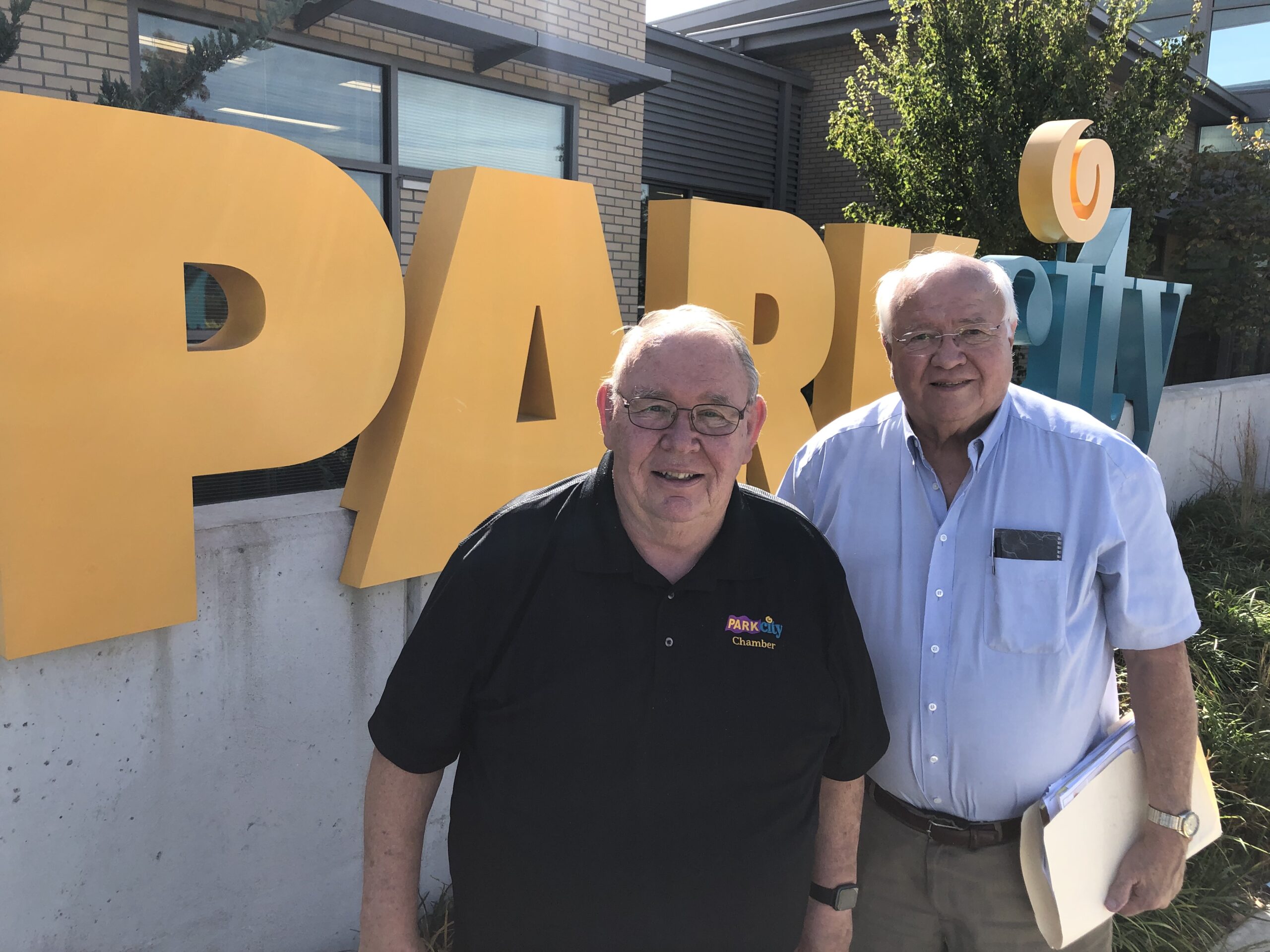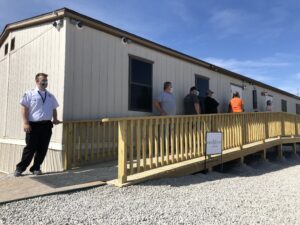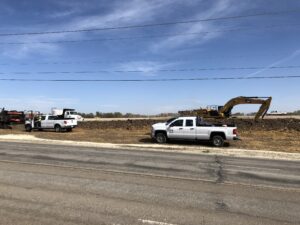Photos by Joe Stumpe
A temporary version of Southwinds Casino (left) opened in Park City last month. A few days later, Amazon announced that it would occupy a massive warehouse under construction in Park City (right).
PARK CITY — When John Todd started advertising homes for sale here, he purposely left out one pertinent fact: their location in Park City.
“I would say ‘New houses, base price $59,900, no special taxes, 15 miles north and east of downtown Wichita.’ The first question (callers) would say is, ‘That ain’t in Park City, is it?’ ” Yes, Todd would admit, “but before you hang up, drive by and decide for yourself whether it’s a place you’d like to live.”
Enough decided they did to keep Todd and builder Tim Hendricks busy for 15 years. Between 1992 and his retirement, he marketed about 20 homes a year here that Tim Hendricks Homes, Inc. built.
Park City has been in the news recently for a couple of positive economic developments. Last month, Amazon confirmed that it would be the occupant of a massive warehouse under construction here, bringing in some 500 jobs, and the Wyandotte Tribe opened a small casino next to where it is building a larger, permanent one. The casino plans to employ about 150 people.
Longtime local boosters such as Todd and former City Administrator Jack Whitson enjoy watching these developments, for they remember when most of the news out of Park City was negative. On a recent driving tour of the city, the two old friends shared stories and bits of history about the place.
“It was a tough sell because of perception,” Todd said of his early work there. “I would call it stigmatized.”
Park City started in the early 1950s as a government housing project for returning veterans and aircraft workers called the Park City Improvement District. (Another Park City was founded in 1870 to the northwest of Wichita but quickly disappeared). Those two- and three-bedroom slab homes were built in an area known as the “horseshoe” encircled by Parkview Street, near 61st and Hydraulic. Operated as rental units, the area eventually became rundown and “had a lot of crime,” according to Whitson.
In the 1960s, the government decided to sell the homes, which should have helped stabilize the area.
But, as Whitson said, “Lo and behold, we had a flood.” Indeed, Chisholm Creek flooded to a level anticipated only once every 500 years. The flood was actually confined to a fairly small area, Whitson said, but the media made it sound worse.
Park City incorporated in 1980, overcoming opposition from Wichita, which wanted to annex the area itself. Unfortunately, the city’s water supply was contaminated by an oil pipeline, giving “bad water issues until the early ‘90s,” Whitson said.
The city had at least two things going for it: cheap land and eight miles of frontage along Interstate 135. Todd started buying up lots cheaply in 1992 and marketing new entry-level homes that started at $59,900. Heoften took trailer homes as down payment and is proud that he could help the buyers “move from a depreciating asset to an appreciating asset.” As the town grew, so did the size and prices of his homes and those of other builders here. Today, it’s not unusual to find homes selling between $300,000 and $400,000.
On the business side of things, Park City has developed into a warehousing and transportation center with a fair sprinkling of amenities. While I-135 gets much of the credit, Todd said Whitson’s efforts can’t be overestimated. Whitson, who moved to Park City in 1970, served on its first City Council and Park Board, was mayor in the late 1980s, helped start the city’s Chamber of Commerce, became the city’s first economic developer in the 1990s and finally city administrator the next decade. He retired in 2019. Todd said Whitson “relished” competing with Wichita for the attention of investors, and sometimes came out on top.
“Instead of going to four or five departments, Jack would hand carry them through this whole process so they could get it done without any red tape.”











